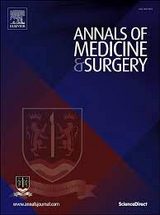Externe Publikationen

An extended SEIRDV compartmental model: case studies of the spread of COVID-19 and vaccination in Tunisia and South Africa
Tamasiga, Phemelo / Helen Onyeaka / Umenweke, Great C. / Uwishema, OlivierExterne Publikationen (2023)
in Annals of Medicine & Surgery 86 (6), 2721-2730
DOI: https://doi.org/10.1097/MS9.0000000000000627
Open access
In the wake of the unprecedented health crisis triggered by the global COVID-19 pandemic, countries are still grappling with the pandemic’s immediate health and socioeconomic consequences. This paper presents an extended SEIRD model with vaccination to study the evolution of COVID-19 in South Africa and Tunisia since the commencement of the vaccination campaign in each country, respectively. Epidemiologists often quantify a risk reduction following the implementation of non-pharmaceutical containment measures and vaccines when attempting to stem the spread of pandemics. However, an important question they often ask is the effectiveness of the non-pharmaceutical containment measures (social distancing and lockdowns) and the efficacy of such measures, including vaccines. Africa’s COVID-19 vaccine roll-out stands at 16% as of April 2022; however, the continent lags behind many developing countries even though it harbours about 16% of the world population. While proliferating literature quantifies the efficacy and effectiveness of COVID-19 vaccines, very little has been done using the SEIRDV model in African countries. This study compares the model-predicted results with the available data to estimate the dynamics of the infected population, using data from 20-03-2021 to 30-12-2021. A simulation of the SEIRDV model is performed and fitted to the data. Simulating the model involves solving a system of Ordinary Differential Equations numerically by taking the initial values for the key model parameters as inputs. After simulating the SEIRDV model, the model parameters are compared with real-world COVID-19 and vaccination data in order to estimate the values of the different parameters that best fit the observed data. The results of the study showed an inverted U-shaped trend for the infection rate after vaccination, indicating that increasing the vaccination rates reduces the transmission rates. Therefore African countries must continue to scale up the vaccination campaigns, and the world needs to endeavour to ensure an equitable vaccination roll-out to developing countries.
Kontakt
Cornelia Hornschild
Koordinatorin Publikationen
E-Mail Cornelia.Hornschild@idos-research.de
Telefon +49 (0)228 94927-135
Fax +49 (0)228 94927-130
Alexandra Fante
Bibliothekarin/Open Access-Koordinatorin
E-Mail Alexandra.Fante@idos-research.de
Telefon +49 (0)228 94927-321
Fax +49 (0)228 94927-130


